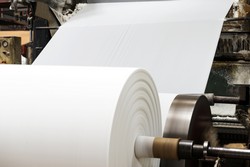Functional materials and components keep paper products in the game
Researchers on the project APPLE(opens in new window) (Autonomous printed paper products for functional labels and electronics) focused on developing electronic circuit with printing technology and low power consumption. Their work has led to a new generation of sustainable, smart printed products. From the outset, APPLE envisioned paper products with specific autonomous properties that interact with users and/or report changes in their environment. The team successfully delivered highly functional, printable labels that can reveal temperature, toxicity or pollution levels. Project efforts resulted in the development of advanced functional materials (paper, fibres, inks), functional components (battery, temperature and gas sensors, an electrochemical display and transistors), and peripheral components (conductive lines, resistors and interconnections). Other deliverables include electrical simulation tools and specific online quality control of the printed electronic paper products. APPLE's cost-effective manufacturing process flow is based on printing and embedding techniques commonly used in the printing industry. It takes into account the need to separate the printing of the electronic components from that of the aesthetic visual label covering and protecting the electronic circuit. APPLE's final demonstrators received top awards at the March 2015 LOPEC Conference, the leading international event/trade fair for printed electronics. Demo1 is an on/off device providing information on the occurrence of a dangerous gas. Demo2 is a paper poster (A0 format) capable of distinguishing three gas levels and immediately showing relevant values. For both demos, printing design accounts for physical constraints for electronic behaviour and printing issues as well as graphic identity of the real product (e.g. poster size, display dimension). The methodology developed by APPLE for these demos can be applied to any electronic printed paper products based on the combination of a sensor, display, battery integrated in a dedicated electrical circuit. Regarding environmental impact, life-cycle analyses of printed circuits on paper showed very low impact on carbon dioxide emissions and other environmental factors, in comparison to conventional electronics. The project work and outcomes contribute to a renewal of the paper industry's products with more added value functional products. The developed technology could also find application in sectors related to public safety, packaging, and chemicals production and use.







